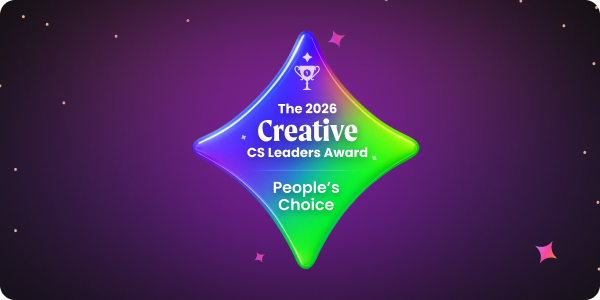What is automated customer onboarding?

Client onboarding is one the most essential stages within your customer’s journey — where your mission is to make sure your customers experience their first time-to-value. So, regardless of which company you’re at if you’re working in SaaS, you will always need to onboard customers — whether in automated fashion, entirely manually, or a combination.
The onboarding consists of several stages:
- Kickoff Call
- Product Training
- Product Setup (optimizing and tailoring the product to maximize usage)
- Onboarding Review (making sure that the customer has completed all of the onboarding stages and is ready to use your product at scale.
I try to reduce my time spent on onboarding tasks by automating as many tasks as possible, mainly by using presentation templates that I can easily duplicate and change their variables on a case-by-case basis.
Defining the differences between your fixed items and variable items allows you to maintain a familiar flow that you know is successful, yet can still be tailored according to your customer when you’re duplicating templates.
The “fixed” items refer to the product features that stay the same for every customer, and the variable part is what you modify according to your customer use-case and unique needs. Examples of variables include: the industry your customer is in, job function of your POCs (marketing, developers, decision makers, etc.), among others.
What’s the goal of automated client onboarding?
Before jumping into template creation you first need to identify the key stages/components of onboarding that will give your customer:
The highest chances to succeed with your product post-onboarding, in a way that leads to ongoing usage and retention.
When I think about the stages I want to add to the onboarding process, I always have the same end-goal in mind: to deliver value to my customer’s business goals and turn him or her into an expert of our product. About the latter, you’d be surprised how customers that fully understand your product offering and added value later become your biggest product advocates and loyalists.
Planning your customer onboarding: Where to start

It’s vital to understand each stage’s constituents, its KPIs, the added value for the customer, and how the customer’s overall product experience will be at the end of the onboarding process — so they’ll ultimately reach their Desired Outcome.
The final item in the checklist (before creating presentation templates) is to understand the customer’s ideal onboarding timeline. This is crucial; having a clear timeline clarifies your understanding of which customers you need to interact in order for them to progress on the onboarding pipeline.
Creating presentation templates
Now comes the template creation stage. The idea is to create templates that contain all of the fixed items (as we discussed earlier) so you can easily duplicate them for every other client and then tailor the presentations by adding specific use-cases or features that are customer or industry-specific.
So far, each onboarding task we’ve discussed can be done using any CSM without using any external tools (other than Google Slides/PowerPoint). Nonetheless, finding the right tools to help you manage and track the onboarding process can be extremely helpful, especially if you find yourself managing 20+ accounts.
Using dedicated tools to track onboarding activities

While an Excel sheet can indeed capture and consolidate all stages of the onboarding process, I highly recommend using an additional tool or customer success software that automatically logs in yours and your customers’ activities. This minimizes human error within progress tracking.
I personally use Salesforce to log activities, which I then easily create reports that inform me of each customer account’s onboarding progress and health score (but the main usage is for internal purposes).
Lately, companies like EverAfter have witnessed the rapidly growing need to automate customer onboarding and other time-consuming CSM tasks. What I like the most about their solution is that I can create a hub where I can directly interact with our customers, add the open items and onboarding stages, include our presentations, KPIs, and many other items. With all of these automated processes, I can still keep it fully customized to each client’s individual needs and use-case. And the best part, this can easily be synced with Salesforce — so we can still run any reports within our CRM.
Automation leads to scalability
Generating added value for every customer is key to client retention. The more customers you retain, the more business grows its customer base. In kind, having a high-quality, efficient onboarding process is not enough. This process must be built to scale, so that you can deliver the same great experience to every customer across the board. Having the right tools and materials to help you achieve that is not “nice to have”, but a MUST-have in today’s SaaS world.




.png)

.png)




%20(1).png)
















.png)
.png)
.png)



.avif)





.png)
.png)







